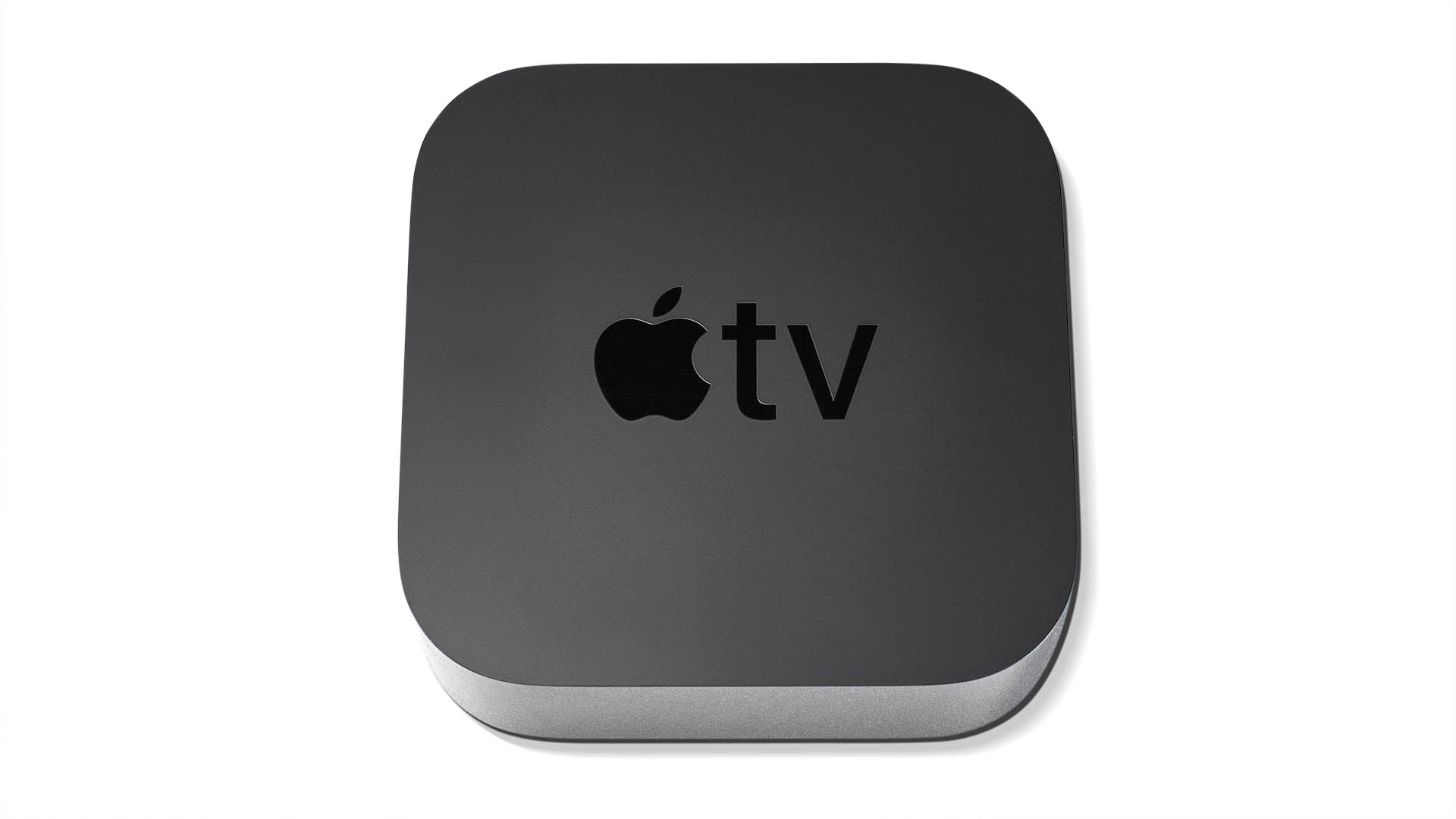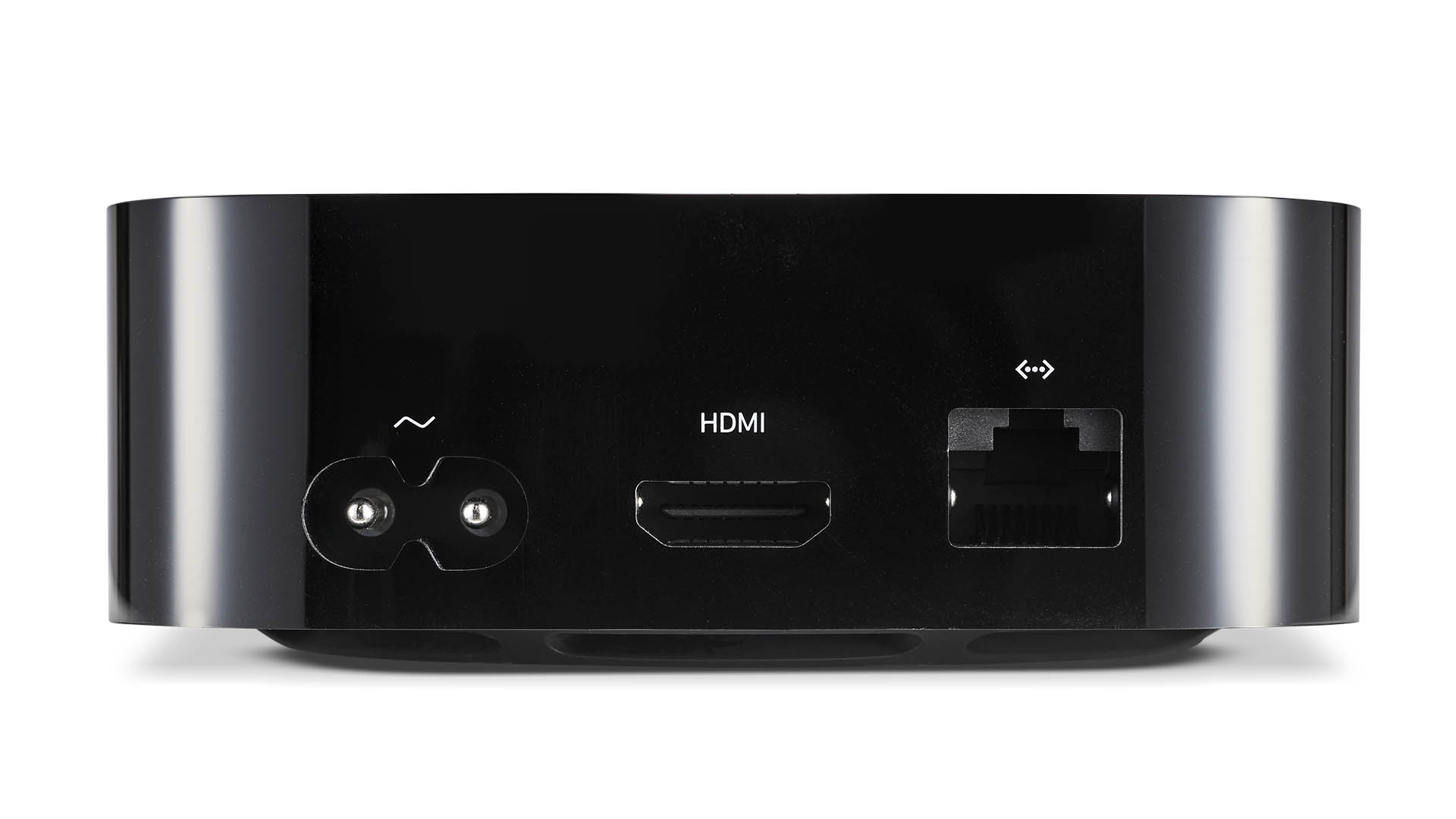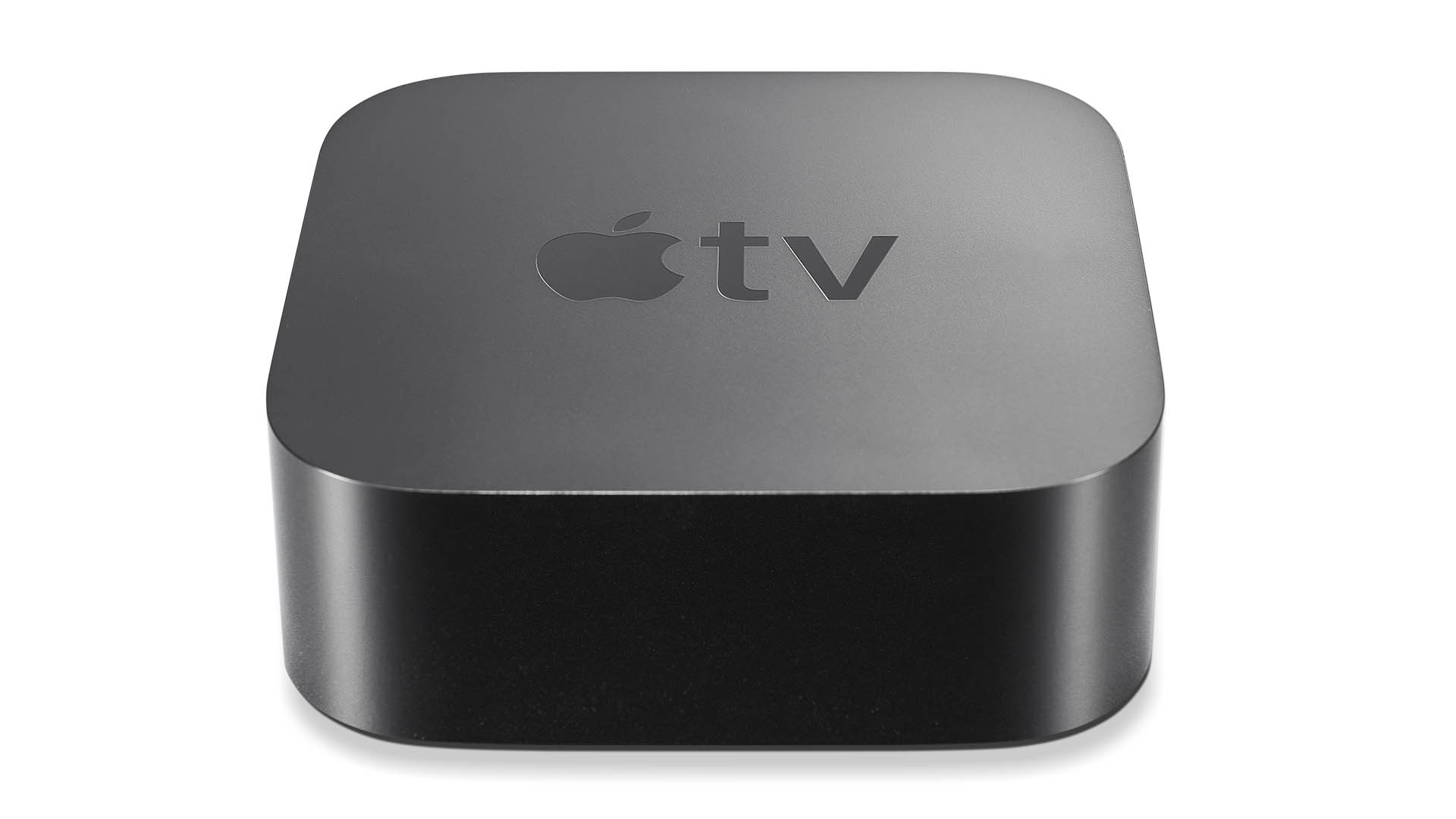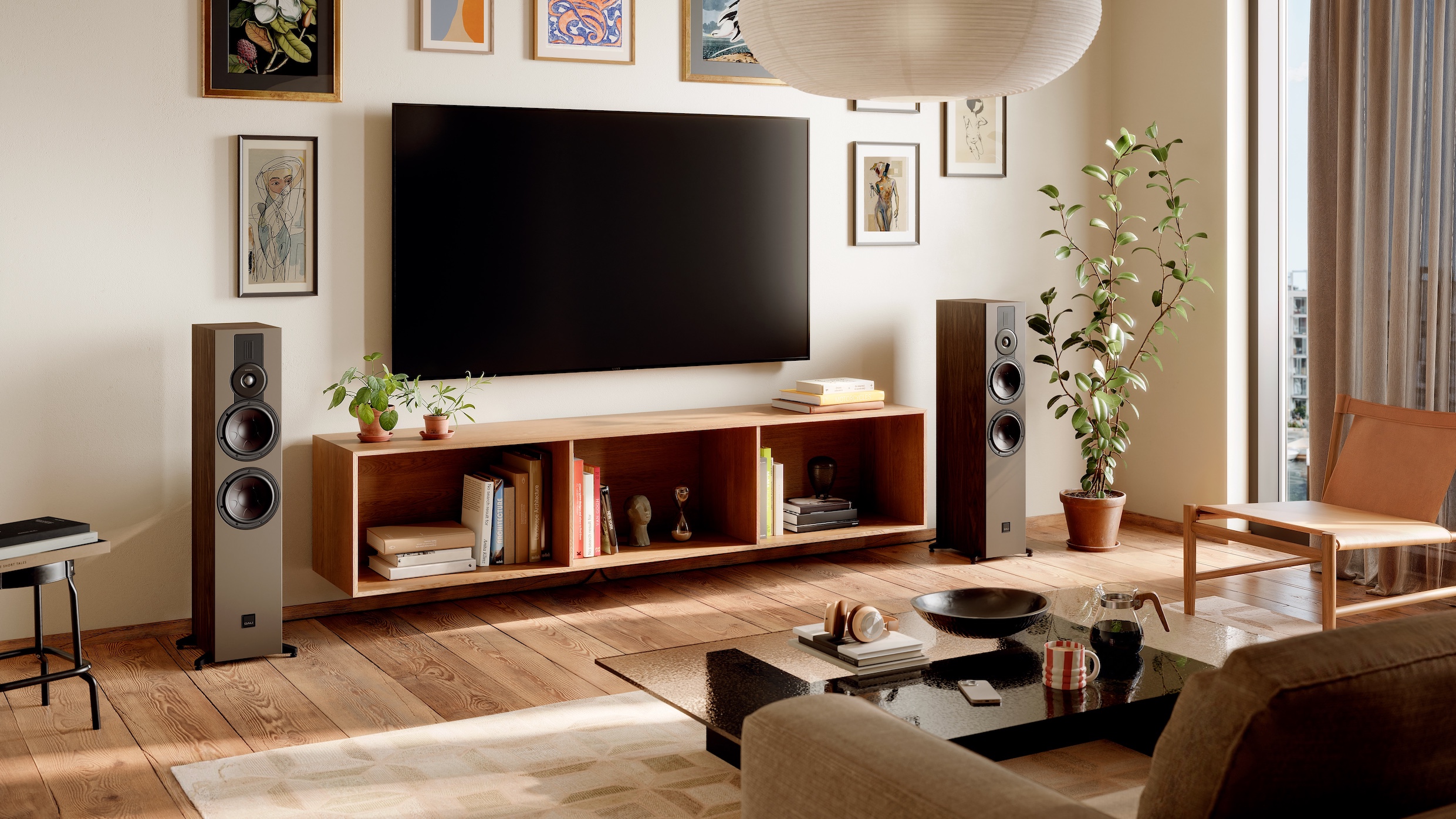What Hi-Fi? Verdict
It’s not worth upgrading if you have the previous model, but if you’re simply looking for the best video streamer out there, this is it
Pros
- +
Excellent picture and sound
- +
Abundance of apps
- +
Great usability
Cons
- -
Pricier than alternatives
- -
No bundled HDMI cable
Why you can trust What Hi-Fi?
Over four years after the launch of its predecessor, this new Apple TV 4K appeared. Not that its newness was obvious from the design, because nothing really changed on that front – and you'd have to examine the specs of both models quite closely to spot any differences there, too. It brought with it a new remote control, though you can buy one of those to go with the last-gen model if you really want.
In other words, it's hard to get too excited about this second-gen Apple TV 4K. It’s more of a shuffle forward than a giant leap.
- Want the latest Apple TV? Read our Apple TV 4K (2022) review
But the original Apple TV 4K was the best video streamer when it launched and, through regular updates, it remained there through its lifespan. This second-generation model doesn’t break the mould, mainly because it didn’t need to.
Instead, Apple has performed a nip here and a tuck there that may not be overwhelmingly exciting, but that have made the best just that little bit better.
Pricing
The Apple TV 4K (2021) costs £169 / $179 / AU$249 with 32GB of built-in storage, and £189 / $199 / $279 if you want the version with 64GB. If you’re expecting to primarily stream movies and TV shows, 32GB should be plenty, but those planning to do lots of gaming should probably consider spending the extra on the 64GB model.
If you can live without 4K, the Apple TV HD 32GB is still available for £139 / $149 / AU$209.
All versions of the Apple TV are significantly more expensive than rival streaming devices. The dongle-like Google Chromecast with Google TV is £60 / $50 / AU$99, while the Amazon Fire TV Stick 4K costs £50 /$50 / AU$99. Even the Amazon Fire TV Cube undercuts the Apple TV, coming in at £110 / $120 (around AU$195).
The latest hi-fi, home cinema and tech news, reviews, buying advice and deals, direct to your inbox.
Build

The second-gen Apple TV 4K is almost identical to its predecessor in terms of design. It’s always a shame when a company chooses not to make aesthetic changes when launching a new version of an existing product, particularly one that’s been around for years, but there’s nothing wrong with the looks or build of the latest Apple TV 4K.

Resolution Up to 4K HDR, 60fps
Bluetooth version 5.0
HDR formats Dolby Vision, HDR10, HLG
Remote control Yes
Dimensions (hwd) 3.5 x 10 x 10cm (1.4 x 4 x 4in)
Weight 425g (15oz)
It’s obviously bigger than stick- and dongle-style video streamers but, at 3.5cm (1.4 inches) tall and 10cm (4 inches) square, it’s compact enough to fit into almost any space. The remote control’s Bluetooth 5.0 functionality means you don’t need to place the box within sight of your seating position.
While the streamer looks and feels the same as before, the remote is new and much improved. It's still compact and minimalist compared with a typical TV remote, it’s a bit bigger and significantly more solid and substantial than its predecessor, and boasts a couple of extra buttons: a dedicated mute button, and a power button that can also operate your TV and home cinema kit. The Siri button, meanwhile, has been moved from the face to the right side for consistency with modern iPhones.
Perhaps the most important change, though, is that the ‘hidden’ trackpad of the old remote has been replaced by a circular clickpad that’s reminiscent of the iPod wheel. The central button and the ring around are both clickable and touch-sensitive, so you’re able to swipe or click as you prefer, and you can also rotate your thumb around the edge to scroll through videos. It’s a much more satisfying and less finicky method of operation than before, although it’s still a bit too easy to accidentally swipe when you want to click.
However, if you own the original Apple TV 4K and fancy that flashy new remote, you can buy it separately for £55 / $59 / AU$79.
Features

The other significant upgrade for the second-gen Apple TV 4K is the processor: Apple has swapped the A10X Fusion chip of the old model for the A12 Bionic. The company claims that this change results in “more realistic games, more lifelike videos, and more immersive sound”. Combined with the new remote, it certainly produces a snappier user experience. The old model is still slick in use, but there’s an extra degree of fluidity to navigation on the new one and menus populate quicker.
The processor also combines with a new HDMI 2.1 socket to add support for 4K HDR content in frame rates of up to 60fps, whereas the old model was limited to 30fps when playing 4K HDR. However, even a year after the Apple TV 4K 2021's launch there’s currently little content available in this High Frame Rate 4K HDR.
It’s also worth noting that HDMI 2.1 is capable of handling even more data-heavy signals than 4K HDR at 60fps, and there’s potentially headroom here for Apple to add support for 120fps 4K or even 60fps 8K in the future, although an apparent lack of support for the AV1 format suggests the latter might be a long shot. It’s also worth mentioning that the new Apple TV 4K comes without a bundled HDMI cable, which feels rather tight-fisted when you consider how much more expensive it is than its rival streamers.
In terms of formats, the Apple TV 4K (like its predecessor) supports HDR in the HDR10, HLG and Dolby Vision formats. HDR10+ has been added since launch as well. Audio formats supported include MP3, AAC, Apple Lossless, FLAC and WAV for stereo, and surround formats up to Dolby Atmos.
Apple added support for spatial audio via AirPods Pro and AirPods Max headphones for both Apple TV 4K boxes with the release of tvOS 15. That means you can now get a Dolby Atmos movie experience via headphones. This will be a real boon for those who don’t have a Dolby Atmos home cinema system or who listen via headphones late at night.
Of course, Dolby Atmos is now becoming more of a concern for music on top of movies, with Apple Music having recently joined Tidal in offering a chunk of its catalogue in the format. Both apps play Atmos content correctly via the Apple TV 4K. There are plenty of other music apps available on the Apple TV 4K, of course, including Spotify and Amazon Music.
On the video side, the app selection is almost flawless. Netflix, Disney+ and, of course, Apple TV+ are all present in all their 4K, Dolby Vision and Atmos glory. The very small selection of Dolby Vision content usually available on Amazon Prime Video plays in plain HDR10 via the Apple TV app, but Dolby Atmos plays as expected.
UK users get the likes of BBC iPlayer, ITV Hub, All 4, My5, Now and BT Sport. US buyers benefit from extra apps such as Paramount+, AMC+, Showtime, Starz, Epix, HBO Max, Hulu and Peacock. The Australian selection, meanwhile, includes the likes of Stan and Binge.
The Apple TV app does its best to collate content from all of your subscriptions in a personalised list of recommendations, but the continued absence of Netflix here limits its usefulness. Google has solved this persistent issue for its Chromecast with Google TV, and we’d like to see Apple follow suit.
Apple’s own iTunes Movies remains the best way to rent and buy movies for streaming, both in terms of the size of the catalogue and the quality of the streams, but this is now also available (via the Apple TV app) on most other streamers and most recently released smart TVs.
While the second-gen Apple TV 4K is certainly less gaming-focused than many predicted, Apple is still making a play for the space. There are lots of games available via the Apple TV App Store for a one-off purchase, and the Apple Arcade subscription service includes access to over 180 ‘premium’ games for a flat fee of £4.99 ($4.99, AU$7.99).
Most of those ‘premium’ games are still at the fairly casual end of the overall gaming spectrum, but support for proper game controllers (including those that come with the PS5 and Xbox Series X) makes for a satisfying console-lite experience and graphics are quickly becoming more advanced. The extra power of the new Apple TV 4K could also pave the way for fancier games in the future.
Picture

The bread and butter of the Apple TV 4K’s experience is its picture quality and we’re pleased to report that the second-gen model puts in an excellent performance. However, the outgoing model was already superb, and the improvements here are slight.
Playing Blade Runner 2049 in Dolby Vision, there’s marginally more contrast on offer. The blackest blacks are just a little bit blacker, and there's a little extra brightness and vibrancy at the other end. The combination creates an image with slightly more impact. This extra contrast helps reinforce the already crisply defined edges, making for a slightly deeper and more three-dimensional picture. But these differences are so slight that you need one of the best TVs to notice them.
The picture is otherwise the same as that of the older model, which is the best of any video streamer we’ve tested. While most stick- and dongle-style devices out there have now moved beyond the computer-like subtlety of video streamers of old, there’s still an extra degree of authenticity and nuance to the Apple TV 4K’s delivery. It’s not up there with a good 4K Blu-ray player, but it is the next best thing, producing an image with all of the punch, definition and dynamism necessary to genuinely thrill.
While it’s now possible to set the Apple TV 4K to output content in its native dynamic range and frame rate (which we heartily recommend that you do), everything will be scaled to the resolution you select in the Settings menu, which will likely be 4K. Some purists may bemoan this ‘limitation’, but the scaling has to be done somewhere in your system and the Apple TV 4K is more than up to the task, upscaling Netflix’s standard-def episodes of Bottom with impressive clarity and control.
Again, the new model is only a bit better here than the old one, but that’s largely a testament to the level Apple had already reached.
Finally on the picture front, both versions of the Apple TV 4K have a feature called 'Colour Balance' which, in conjunction with your iPhone, measures your TV's colour balance and adjusts the video signal output so that it's more in line with 'industry standards'. You can apply Colour Balance to standard HDR and SDR signals but not Dolby Vision as that's, in theory at least, accurate already.
The results are broadly good, but the Colour Balance picture is unsurprisingly warm in tone, which may not suit everyone. Once you've been through the process you're given a pre- and post-balance comparison, so there's no harm in trying it to see if it's to your tastes.
Sound

Played via a capable home cinema system, there’s a small but noticeable uptick in the new Apple TV 4K’s delivery of Blade Runner 2049’s excellent Dolby Atmos soundtrack, particularly in terms of weight, spaciousness and cohesion to the soundstage. It’s marginal, but the new model gives every effect a little more room to breathe and fill out, leaving the older model sounding just a bit narrow and beam-like by comparison.
The same is true when listening to music, whether delivered in stereo or Dolby Atmos. There’s no loss in terms of focus or directness, but just a marginal increase in spaciousness and fullness. Of course, an Apple TV is still no match for a proper bit of hi-fi kit when it comes to music, particularly in terms of rhythmic precision and detail, but the Apple TV 4K is a much more musical performer than most of its ilk.
Verdict
Overall, we wouldn’t recommend buying the second-gen Apple TV 4K if you already own the outgoing model. The upgrades to picture and sound performance are marginal, the new remote, lovely though it is, doesn’t transform the experience, and the faster processor only really makes its presence felt in slightly snappier navigation.
But the outgoing Apple TV 4K was already the best video streamer you could buy and the new version is the same but a bit better. That extra power could be leveraged more in the future, too, perhaps with more advanced games and video performance. In the shorter term, the High Frame Rate 4K HDR feature will likely be used by more apps, theoretically making for smoother, better-looking video streams, particularly for sport.
In short, if you’re looking to buy the best video streamer currently available, the new Apple TV 4K is it.
SCORES
- Picture 5
- Sound 5
- Features 5
MORE:
See all the What Hi-Fi? Awards 2022 winners
Read our guide to the best TV streaming devices
Read our Google Chromecast with Google TV review
Read our Amazon Fire TV Cube review
Read our Amazon Fire TV 4K review
What Hi-Fi?, founded in 1976, is the world's leading independent guide to buying and owning hi-fi and home entertainment products. Our comprehensive tests help you buy the very best for your money, with our advice sections giving you step-by-step information on how to get even more from your music and movies. Everything is tested by our dedicated team of in-house reviewers in our custom-built test rooms in London, Reading and Bath. Our coveted five-star rating and Awards are recognised all over the world as the ultimate seal of approval, so you can buy with absolute confidence.

